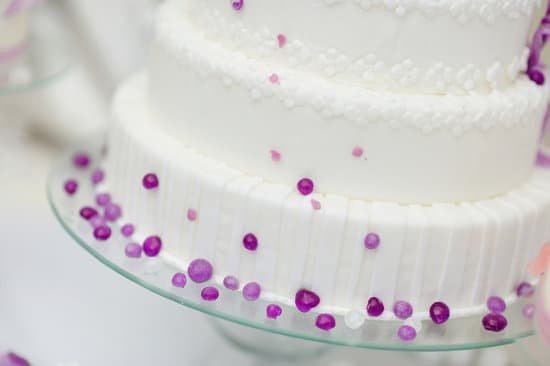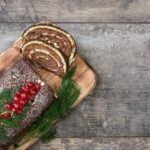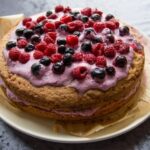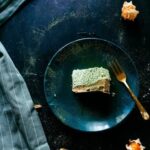Cake balls have become a beloved dessert choice in recent years, with their delightful combination of cake and frosting in a bite-sized treat. But what truly sets cake balls apart is the art of decoration. Decorating cake balls allows you to unleash your creativity and take your desserts to a whole new level. In this article, we will explore the importance of decorating cake balls and provide you with valuable tips to create stunning designs that will impress everyone.
The surge in popularity of cake balls can be attributed to their versatile nature. These little sweet treats can be enjoyed at all occasions, from birthday parties to weddings, and everything in between. Whether you want them as part of a dessert table or individually wrapped as party favors, the presentation of cake balls plays a significant role in their appeal.
Decorating cake balls not only adds visual appeal but also enhances the overall eating experience. A beautifully designed cake ball can entice your taste buds even before taking the first bite. By selecting complementary colors, textures, and flavors, you have the power to create an impression that captivates both the eyes and taste buds.
In the following sections, we will delve into various aspects of cake ball decoration. We will guide you on selecting the perfect recipe for your desired flavor profile and dietary preferences. We will also discuss shaping and assembling techniques for flawless results every time. Additionally, we’ll explore essential coating techniques and advanced designs to elevate your creations further. So join us on this artistic journey as we unlock the secrets behind mastering the art of cake ball decoration.
Selecting the Perfect Cake Ball Recipe
When it comes to cake ball decorating, selecting the perfect cake ball recipe is crucial. The flavor and texture of the cake will play a significant role in the overall taste and presentation of your cake balls. Here are some tips to help you choose the ideal recipe for your cake balls:
- Identifying the ideal flavors and textures for cake balls: Consider the occasion or theme you have in mind when choosing flavors for your cake balls. Classic options like chocolate and vanilla are always popular choices, but don’t be afraid to get creative with flavors like red velvet, lemon, or even matcha green tea.
It’s also important to consider the texture of your chosen recipe. A moist and tender cake that crumbles easily will work best for shaping into cake balls. - Tips for achieving the perfect consistency and moisture: Achieving the right consistency and moisture level is key to creating cake balls that hold their shape without being too dry or mushy. Follow your chosen recipe closely and pay attention to measurements, as even small deviations can affect the texture of your cake.
If necessary, make adjustments by adding extra moisture (such as simple syrup, flavored liqueur, or fruit puree) or crumbs from additional baked cakes until you achieve a texture that can be easily rolled into smooth balls. - Considering dietary restrictions or preferences: It’s important to take into account any dietary restrictions or preferences when selecting a cake ball recipe. For example, if you’re catering to gluten-free individuals, look for recipes that use gluten-free flour blends instead of regular all-purpose flour.
Similarly, if you’re serving vegan guests, there are plenty of delicious vegan cake recipes out there that can be adapted into vegan-friendly cake balls by using plant-based milk and egg substitutes.
| Flavor | Description |
|---|---|
| Classic Chocolate | A rich and decadent chocolate cake recipe that is perfect for any chocoholic. |
| Lemon Raspberry | A refreshing combination of bright lemon flavor and tangy raspberry filling. |
| Red Velvet | A velvety smooth and slightly tangy cake with a deep red color, often paired with cream cheese frosting. |
Remember, the flavors and textures you choose for your cake balls can greatly enhance the enjoyment and visual appeal of your creations. Experiment with different recipes to find the ones that work best for you, and don’t be afraid to get creative by adding unique fillings or incorporating complementary flavors. With a well-selected cake ball recipe, you’re one step closer to creating stunning and scrumptious treats.
Mastering the Basics
Shaping and assembling cake balls is a fundamental skill that every cake ball decorator should master. Whether you’re a beginner or experienced baker, understanding the techniques involved in shaping and assembling cake balls will help you achieve professional-looking results. In this section, we will provide step-by-step instructions and valuable tips to ensure your cake balls are perfectly shaped and assembled.
To begin, it’s important to start with a well-cooked and cooled cake. The texture of the cake plays a significant role in the final consistency of your cake balls. A moist and crumbly cake works best for forming smooth and uniform shapes. You can use any flavor of cake as long as it pairs well with your chosen coating options.
Once your cake is ready, begin by crumbling it into fine crumbs using your hands or a food processor. Next, add any desired mix-ins such as frosting or flavorings to enhance the taste and texture of your cake balls. Mix the crumbs and additional ingredients until they come together to form a dough-like consistency that holds its shape when squeezed.
Now it’s time to shape your cake balls. Take small portions of the dough, about 1 inch in diameter, and roll them between your palms until they become smooth spheres. If you prefer consistent sizes, consider using a cookie scoop or melon baller to portion out the dough before rolling them into balls. Place the shaped balls onto a lined baking sheet or plate and refrigerate them for at least 30 minutes or until firm.
When assembling your chilled cake balls into their desired forms (such as pops on sticks or truffles), there are a few key tips to keep in mind. If using sticks, gently insert them into each chilled ball about halfway through without pushing all the way through to avoid cracking the coating later on. For truffles or un-sticked cake balls, simply arrange them on parchment paper-lined trays with enough spacing between them for easy access during coating.
By mastering the basics of shaping and assembling cake balls, you’ll set a solid foundation for the rest of your cake ball decorating journey. Remember to be patient and take your time during this process. Practice makes perfect, and soon you’ll be able to create beautifully shaped and assembled cake balls that are ready for the next step: coating.
Essential Cake Ball Coating Techniques
Coating cake balls is a crucial step in the cake ball decorating process. It not only provides a protective layer to keep the cake moist but also adds an attractive finish to the overall presentation. In this section, we will explore some essential cake ball coating techniques that will help you achieve a flawless and glossy look.
- Exploring different coating options: When it comes to coating cake balls, there are several options to choose from. The most common choice is melted chocolate, which can be either white, milk, or dark chocolate depending on your preference. Another popular option is candy melts, which come in a wide variety of colors and flavors, making them perfect for creating vibrant and eye-catching decorations.
- Achieving a flawless and glossy finish: One of the hallmarks of professionally decorated cake balls is a smooth and glossy finish. To achieve this, it’s important to melt your coating (whether it’s chocolate or candy melts) properly. Use low heat and stir frequently to avoid burning or overheating the coating. If using chocolate, tempering the chocolate will give you a shinier finish and more stable coating.
- Tips for preventing coating cracks or excess dripping: One challenge that many decorators face is dealing with cracks or excessive dripping when coating their cake balls. To prevent cracking, make sure your cake balls are chilled thoroughly before dipping them into the coating.
This helps firm them up and prevents them from falling apart during the process. Additionally, tapping off any excess coating gently against the side of the bowl before placing them on a drying rack will help prevent drips from forming.
Remember, practice makes perfect when it comes to coating cake balls. Don’t be discouraged if you don’t get it right on your first try – keep experimenting and refining your technique until you achieve the desired results.
– List of essential cake ball coating techniques:
- Melted chocolate (white, milk, dark).
- Candy melts (variety of colors and flavors).
– Tips for achieving a flawless and glossy finish:
- Melt coating properly using low heat and stir frequently.
- Consider tempering chocolate for shinier finish.
– Tips for preventing coating cracks or excess dripping:
- Chill cake balls thoroughly before dipping to firm them up.
- Tap off excess coating gently against the side of the bowl to prevent drips.
Elevating Cake Ball Decoration
Just shaping and coating cake balls can result in beautiful treats, but for those looking to take their cake ball decoration to the next level, adding intricate designs is the way to go. By incorporating unique patterns and artistic effects, cake balls can become even more visually appealing and impressive. This section will provide tips and techniques for adding intricate designs to cake balls.
One way to add intricate designs to cake balls is by using molds and stamps. Molds can be used to create various shapes or patterns on the surface of the cake ball. Simply press the mold onto the ball and carefully remove it to reveal a detailed design.
Stamps can also be used to imprint patterns onto the surface of the cake ball. Dip the stamp into edible ink or paint and gently press it onto the ball for a clear impression.
In addition to using molds and stamps, edible paints, dusts, and shimmer can be incorporated into cake ball decoration for artistic effects. Edible paints can be brushed or painted onto the surface of the cake ball to create colorful designs or patterns. Edible dusts can be applied with a brush or finger to give a metallic or glittery effect.
Shimmer can be sprinkled over a wet coating layer for an elegant touch. These additions not only enhance the appearance of the cake balls but also add unique flavors and textures.
To ensure that your intricate designs stay intact during the decorating process, there are a few tips to keep in mind. First, make sure that any coatings on your cake balls are fully set before applying any additional designs. This will prevent smudging or running of paints, dusts, or shimmer.
Additionally, handle your decorated cake balls with care when transferring them from one place to another. Use a spatula or tongs instead of your hands if necessary, as oils from your skin can potentially damage delicate designs.
Adding intricate designs takes time and patience but results in truly stunning cake ball creations. By utilizing molds, stamps, edible paints, dusts, and shimmer, you can elevate your cake ball decoration to a new level of artistry. Remember to let coatings fully set before applying designs and handle the decorated cake balls with care. With these tips in mind, get ready to impress everyone with your beautifully designed and delicious cake balls.
Creative Cake Ball Presentation Ideas
Cake ball decorating goes beyond just the delicious taste and beautiful designs. The way you present your cake balls can elevate your creations and make them even more enticing. In this section, we will explore some creative cake ball presentation ideas that will surely impress your guests.
Exploring Various Display Options
When it comes to presenting cake balls, the possibilities are endless. One option is to display them on a platter or cake stand. Arrange them in a uniform pattern or create an eye-catching design with different colors and flavors. Another idea is to use individual cupcake liners or miniature treat cups to showcase each cake ball individually.
For special occasions or themed parties, consider using themed décor elements to enhance the presentation. For example, use colorful sprinkles for a festive touch or edible glitter for a glamorous look. You can also use mini chalkboard signs or edible icing pens to label each flavor if you’re serving different varieties.
Tips for Arranging Cake Balls
Arranging cake balls can be just as important as how you display them. If you’re using a platter or stand, arrange the cake balls in even rows or in concentric circles for an aesthetic appeal. Leave some space between each one so they don’t stick together.
For added visual interest, try varying the heights and sizes of the cake balls by placing them on small pedestals or using tiered displays. This creates depth and dimension to your presentation.
Incorporating Decorative Elements
To add an extra touch of elegance or personalization, incorporate decorative elements into your cake ball presentation. Wrap satin ribbons around sticks before attaching the cake balls to give them a polished look. You can also place tiny flowers or edible decorations between the cake balls to add pops of color and texture.
If you’re creating themed cake balls, go all out with themed décor elements like small plastic animals or characters. Consider using props that match the theme, such as seashells for a beach or ocean-themed party, or miniature flags for a patriotic gathering.
Remember, the presentation of your cake balls is an opportunity to showcase your creativity and attention to detail. With these creative ideas and tips, you’ll be able to create stunning displays that will have everyone eager to try your delightful creations.
Troubleshooting Common Cake Ball Decorating Issues
Cake ball decorating can be a fun and creative process, but sometimes issues can arise that can make it frustrating. In this section, we will explore some common cake ball decorating issues and provide you with tips and tricks to troubleshoot them.
Addressing issues like cake balls sliding off sticks
One common issue that many people face when decorating cake balls is that they tend to slide off the sticks. To prevent this from happening, there are a few things you can do. First, make sure that your cake balls have been properly chilled before inserting the sticks.
The cold temperature will help them adhere better to the sticks. Additionally, you can dip the tip of each stick into melted chocolate or candy melts before inserting it into the cake ball. This will create a secure base.
Fixing lumpy or uneven coating
Another common issue is when the coating on your cake balls turns out lumpy or uneven. To fix this problem, it is important to ensure that your cake balls are well-chilled before coating them. The cold temperature will help the coating set quickly and evenly.
You should also use a spoon or fork to gently roll the cake ball in the coating, making sure to tap off any excess before placing it on a lined baking sheet. If you notice any lumps or unevenness after dipping, you can use a toothpick or small brush dipped in melted chocolate or candy melts to smooth out the surface.
Tips for achieving consistent sizing and coating thickness
Consistency in sizing and coating thickness is important for creating visually appealing cake balls. To achieve this, start by using a cookie scoop or tablespoon to measure out equal portions of cake mixture for each ball. Roll them between your hands until they are round and smooth.
For consistent coating thickness, place your coated cake balls on a wire rack after dipping, allowing any excess coating to drip off. This will ensure a more even coating and prevent pooling at the base of the cake ball.
By following these troubleshooting tips, you can overcome common cake ball decorating issues and create stunning creations. Remember to be patient and have fun with the process. Learning from mistakes and experimenting with different techniques will ultimately lead to beautifully decorated cake balls that are as delicious as they are visually appealing.
- Fixing lumpy or uneven coating.
- Tips for achieving consistent sizing and coating thickness.
Expert Tips for Advanced Cake Ball Decorating Techniques
Once you have mastered the basics of shaping, assembling, and coating cake balls, you may be ready to take your cake ball decoration to the next level with some advanced techniques. These techniques will allow you to create stunning and professional-looking designs that will impress your friends and family. Here are some expert tips for advanced cake ball decorating techniques:
- Marbling: Marbling is a technique that involves creating swirls or patterns on the surface of the cake ball. To achieve this effect, melt two or more colors of candy melts or chocolate and drizzle them over the coated cake balls. Then, use a toothpick or skewer to gently swirl the colors together, creating a beautiful marbled pattern.
- Drizzling: Drizzling is another way to add visual interest to your cake balls. After coating your cake balls with chocolate or candy melts, let them cool slightly until the coating is partially set but still slightly soft. Then, dip a spoon or fork into melted chocolate or candy melts and quickly move it back and forth over the cake balls to create decorative drizzles.
- Layering: Layering allows you to add different flavors and textures to your cake balls. Start by shaping one type of cake ball mixture into small balls. Then, place a small amount of another type of mixture on top of each ball and roll it in your hands again to ensure that both mixtures are well combined. This technique can be particularly effective when using contrasting flavors such as chocolate and peanut butter or vanilla and raspberry.
To achieve professional-looking results with these advanced techniques, practice is key. Start by trying them out on a few cake balls before moving on to larger batches. Experiment with different color combinations, patterns, and flavors to find what works best for you.
| Technique | Description |
|---|---|
| Marbling | Create swirls or patterns on the surface of cake balls by drizzling and swirling different colors of melted candy melts or chocolate. |
| Drizzling | Add visual interest to cake balls by dipping a spoon or fork into melted chocolate or candy melts and creating decorative drizzles over the coated balls. |
| Layering | Add different flavors and textures to cake balls by shaping one type of mixture into balls and then adding another type of mixture on top before rolling in hands again. |
Conclusion
In conclusion, cake ball decoration is an art form that allows individuals to showcase their creativity and create stunning edible masterpieces. Throughout this article, we have discussed various tips and techniques to help you achieve beautiful cake ball creations.
From selecting the perfect cake ball recipe to mastering the basics of shaping and assembling, each step plays a crucial role in the final result. We explored essential coating techniques and learned how to prevent cracks or excess dripping. Additionally, we discovered ways to elevate cake ball decoration by adding intricate designs and incorporating artistic effects with edible paints, dusts, and shimmer.
To further enhance your cake ball presentation, we explored various display options and tips for arranging cake balls on platters or stands. By incorporating decorative elements such as ribbons or themed decor, you can truly make your cake balls stand out.
Throughout your journey in cake ball decorating, it is important to troubleshoot common issues that may arise. We addressed issues like cake balls sliding off sticks and provided tips for fixing lumpy or uneven coatings. Additionally, consistent sizing and coating thickness were discussed as key factors in achieving professional-looking results.
In summary, by utilizing the valuable tips and techniques shared in this article, you are well on your way to creating stunning cake ball creations. Embrace your creativity, experiment with different flavors and designs, and enjoy the joy that comes from expressing yourself through this delicious art form. Whether it’s for a special occasion or simply a delightful treat for yourself and loved ones, let your imagination soar as you embark on the wonderful world of cake ball decoration.
Frequently Asked Questions
How do you dip cake balls perfectly?
Dipping cake balls perfectly requires a few key steps. First, it’s important to ensure that your cake balls are properly chilled and firm before dipping them into melted chocolate or candy coating. This helps the coating adhere well to the cake ball without causing it to crumble.
When melting the chocolate or candy coating, it’s crucial to follow the instructions and use a microwave or double boiler method for even and smooth melting. Once your cake balls are ready for dipping, gently lower each one into the melted coating using a fork or toothpick, ensuring it’s fully submerged and coated all around. Allow any excess coating to drip off before carefully transferring the dipped cake ball onto a parchment-lined baking sheet to set.
What is the trick to dipping cake pops?
The trick to dipping cake pops lies in proper preparation and technique. One essential tip is to use high-quality chocolate or candy coating that melts easily and has good consistency for dipping. Before starting the dipping process, have all your supplies ready, including sticks inserted in the cake balls with enough space to hold them comfortably without touching them directly.
When you dip each cake pop into the melted coating, make sure you do so by gently swirling it until fully coated while being cautious not to twist or jiggle too much as this may cause the cake pop to fall apart. Properly tapping off any excess coating will contribute to smoother results. To improve stability, place each finished cake pop upright in a foam block or stand while allowing them to dry completely.
What is the best way to decorate cake pops?
The best way to decorate cake pops is by being creative while considering various methods depending on your preferences and desired outcome. Some popular techniques include drizzling melted chocolate or icing over the dipped surface of the cake pop using a spoon or piping bag for an elegant effect. Adding colorful sprinkles, nonpareils, edible glitter dust, or even crushed cookies can enhance their visual appeal.
Alternatively, you may choose to use food coloring pens or edible ink markers for intricate designs or personalized messages. Another creative option is to attach small fondant shapes or edible decorations using a small amount of melted coating as an adhesive. Ultimately, the best way to decorate cake pops is to experiment and let your imagination guide you, ensuring they reflect your unique style and taste.

Welcome to our cake decorating blog! My name is Destiny Flores, and I am the proud owner of a cake decorating business named Cake Karma. Our mission is to provide delicious, beautiful cakes for all occasions. We specialize in creating custom cakes that are tailored specifically to each customer’s individual needs and tastes.





